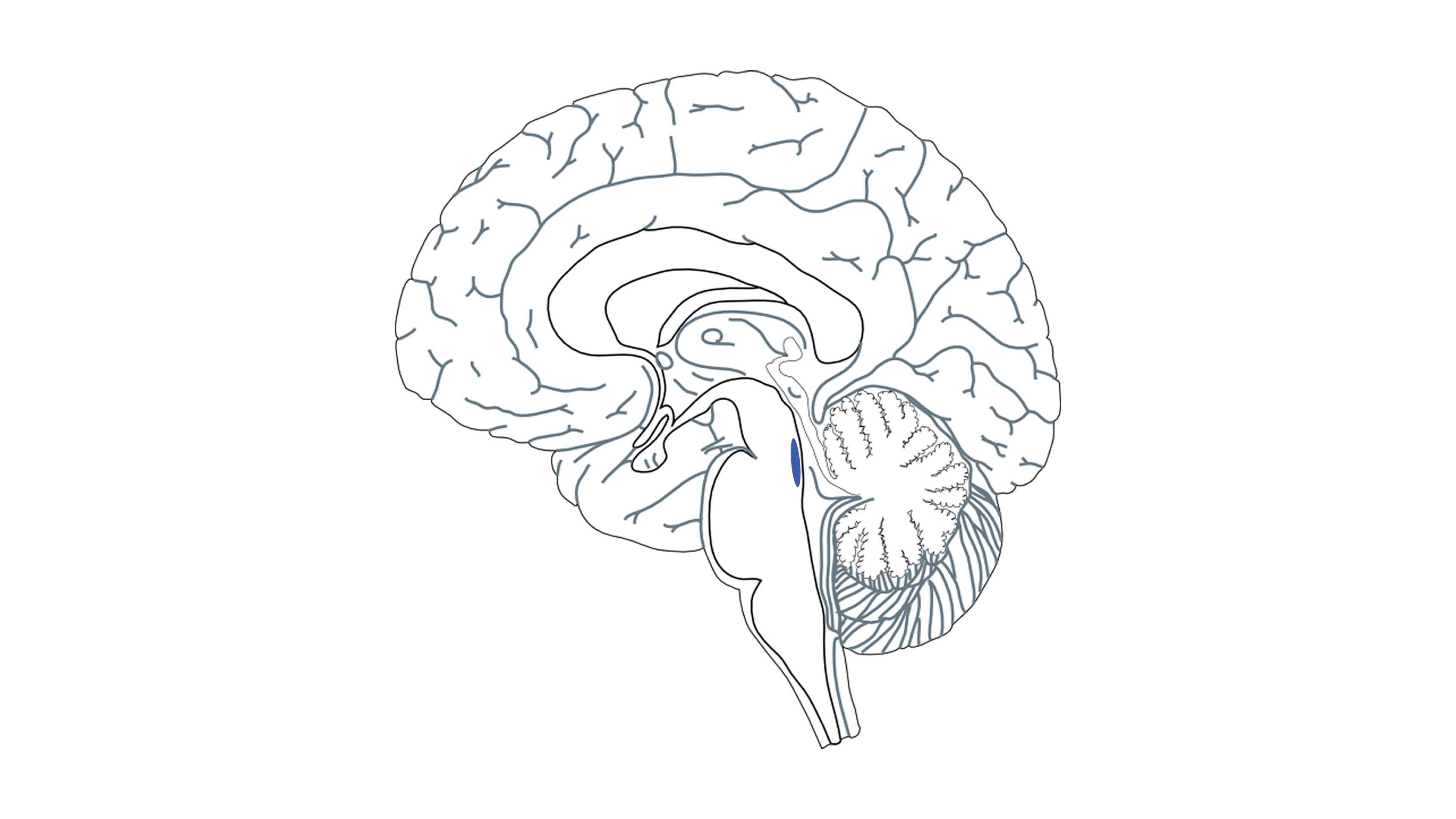‘Blue spot’ in the brain aids in early detection of Alzheimer’s
A miniscule area in the brain can help to identify an increased risk of Alzheimer’s disease at a very early stage. The locus coeruleus (LC), or blue spot, is hidden deep in the brainstem and can only be detected with advanced MRI equipment. Heidi Jacobs (Maastricht University/Harvard Medical School) used MRI scans to show that the tau protein can begin to spread in the LC three decades before the first disease symptoms are visible. Scientists have long suspected that this tau protein plays an important role in the development of Alzheimer’s. Jacobs and her team recently published their findings in Science Translational Medicine.

Tau protein
Many researchers believe Alzheimer’s disease is caused by the amyloid protein. But the tau protein, too, appears to play a critical role. Tau forms harmful protein tangles in the brain cells of people with Alzheimer’s. Jacobs’ research shows that the development of these protein tangles is associated with changes in the blue spot in the brain. She was able to draw the link between the accumulation of tau in the LC and accelerated memory deterioration.
“The LC is tiny, so it’s difficult to map in living people,” Jacobs explains. “In Maastricht we studied this spot for the first time using new, ultra-strong MRI scanners. We shared that knowledge with Harvard Medical School, where the MRI scans were coupled with PET scans to visualise the tau protein in 174 people who have been followed in the US over the course of 10 years. We were able to show that changes in the LC in young adulthood are associated with tau-protein accumulations and memory problems typical of Alzheimer’s disease. Our findings also demonstrate that these early changes in the LC are not a normal part of ageing, but may actually signal the development of Alzheimer’s.”
Early stage
Alzheimer’s disease is the most common form of dementia. In the Netherlands, almost 300,000 people live with dementia, a number expected to exceed half a million by 2040. At present, no drug is available that cures dementia. But if an increased risk of Alzheimer’s can be detected at a very early stage, a healthier lifestyle could in turn reduce an individual’s risk of developing dementia. “The LC plays an important role in sleep, stress, emotions and memory,” Jacobs says. “For that reason, and because this spot is affected by the tau protein so early, MRI images of it can help to identify people at increased risk of Alzheimer’s disease. In the future, MRI measurements of the LC may provide clues for new treatments that slow the development of Alzheimer’s.”
Also read
-
No evidence of brain damage caused by severe COVID-19
Patients admitted to hospital due to a severe COVID-19 infection exhibit no evidence of brain damage caused by the disease. This is the conclusion of an extensive study led by Maastricht University.

-
Cold shivers?
Due to the Western lifestyle with a high fat diet combined with little exercise, more and more people in the Netherlands are overweight or even obese. This causes an increased risk of type II diabetes. What can be done about this besides a healthier lifestyle? The answer comes from an unexpected...

-
Quantity and Quality
Survivors of colon cancer often have symptoms associated with the cancer or treatment for years after treatment, such as fatigue and tingling in fingers and feet. This has a great impact on the perceived quality of life. Whereas current lifestyle advice is mainly aimed at prevention of (colon)...
